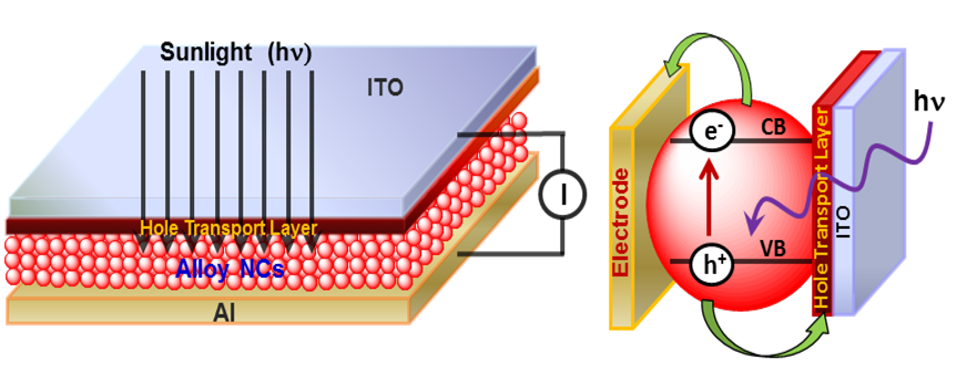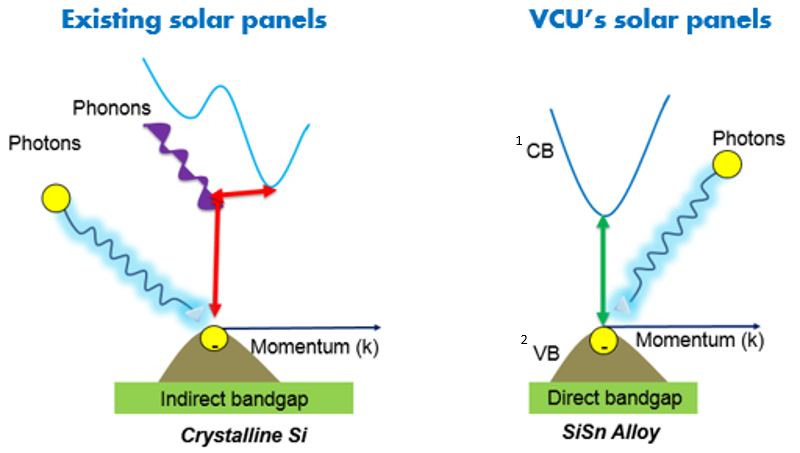Materials for Solar Cells
Direct-Gap Nanocrystals
Highly Efficient Materials for Light Harvesting
A Virginia Commonwealth University inventor has developed a material that could drastically improve the efficiency of solar technology. Current materials used in solar cells utilize indirect energy-gaps for light absorption. While these methods are effective, they are also highly expensive. It is for this reason that solar technology is not currently competitive with fossil fuels. This new VCU material aims to change that narrative by enhancing the light harvesting ability of solar cells, while radically reducing the material costs. Through the use of direct energy-gaps and Group IV semiconductor nanostructures, this new material has the potential to make solar energy a more economical option that is accessible to a wider range of people.
Figure 1: A simplified Quantum Dot Photovoltaic Device
The technology
The developed material is comprised of a Group IV semiconductor nanostructure which utilizes direct energy-gaps. Unlike indirect energy gaps which require a photon and a phonon for excitation, these direct energy gaps only require a photon. This allows for higher absorption rates in the visible to near IR spectrum. This technology is also compatible with existing silicon electronics as it is composed of Group IV semiconductors. With these two advantages, this technology can provide a low-cost solution that can greatly increase the efficiency of optoelectronics. The nanostructure of the material can also be tuned so that the absorption and emission profiles can meet the needs of any desired technology (solar cells, light emitting diodes, optical sensors).
Figure 2: (a) Example of indirect bandgaps used by existing solar panels, (b) Example of direct bandgaps used by VCU’s technology; 1-Conduction Band, 2-Valence Band
